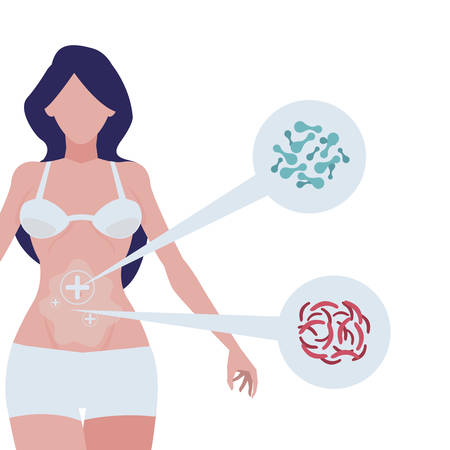Understanding Dehydration in Infants
Dehydration happens when the body loses more fluids than it takes in, and for babies, this can be especially serious. Infants are much more vulnerable to dehydration than older children or adults because their bodies are made up of a higher percentage of water, and they have limited ability to communicate their needs. In the United States, common causes of dehydration in babies include diarrhea, vomiting, fever, or simply not getting enough fluids—sometimes due to feeding difficulties or hot weather. It’s important for parents and caregivers to understand that even mild dehydration can quickly escalate in little ones. By recognizing what dehydration means for infants and knowing why they’re more susceptible, you can take gentle, proactive steps to keep your baby safe and well-hydrated.
Recognizing the Signs of Dehydration
Spotting dehydration in infants can be challenging, especially for new parents. Babies can’t tell us how they feel, so it’s important to look for subtle and clear signs that may suggest they’re not getting enough fluids. In the U.S., busy routines and changing seasons can sometimes make it easy to miss these cues. Below are practical and relatable ways to identify both early and more advanced signs of dehydration in your little one.
Early Signs to Watch For
Some early indicators of dehydration might seem minor at first glance, but they are important signals that your baby needs extra attention. Here are some cues:
| Sign | What You Might Notice |
|---|---|
| Fewer wet diapers | Fewer than 6 wet diapers in 24 hours is a common red flag. |
| Darker urine | Pee looks darker yellow instead of pale or clear. |
| Dry mouth and lips | Lips or inside of the mouth look dry instead of moist. |
| No tears when crying | Your baby cries but doesn’t produce real tears. |
| Lethargy or irritability | Your infant seems unusually sleepy, fussy, or less playful than normal. |
Advanced Signs That Need Immediate Attention
If dehydration progresses, you may notice more serious symptoms. These require prompt action and possibly medical help:
| Sign | What You Might Notice |
|---|---|
| Sunken fontanelle (soft spot) | The soft spot on top of your baby’s head appears sunken or depressed. |
| Sunken eyes | Your child’s eyes look deeper set than usual. |
| Cool, mottled skin | The skin feels cool to the touch and may have blotchy patches. |
| Rapid breathing or heart rate | Your baby is breathing faster than normal or has a racing heartbeat. |
| No urine output for 8+ hours | No wet diaper for over 8 hours is a serious warning sign. |
Relatable Everyday Scenarios for U.S. Parents and Caregivers
Imagine you’re out for a family picnic during a hot summer day, or maybe your little one is feeling under the weather with a tummy bug—these are common scenarios where dehydration risk increases. Always check diaper changes regularly and keep an eye on how your baby behaves throughout the day. Trust your instincts: if something feels off, it’s better to be cautious and reach out to your pediatrician.

3. Common Causes of Dehydration in U.S. Infants
Dehydration can sneak up on infants more quickly than we might expect, especially in the unique environments and everyday routines found in American households. Understanding the common causes can help parents stay alert and responsive.
Heatwaves and High Temperatures
In many parts of the United States, summers can bring long stretches of hot weather. Whether you’re spending time at a Fourth of July barbecue or simply enjoying outdoor playtime, infants are particularly vulnerable to dehydration during heatwaves. Babies can’t sweat as efficiently as older children or adults, making it harder for them to cool down. Even a short walk in a stroller or an afternoon at the park can increase their risk if fluids aren’t offered frequently.
Tummy Bugs: Gastrointestinal Illnesses
Stomach viruses—often called “tummy bugs” here—are another leading cause of dehydration in infants. These bugs are common in daycare settings, playgroups, and even within families, spreading quickly from one child to another. Vomiting and diarrhea can cause babies to lose essential fluids and electrolytes rapidly, making it important to watch for early signs of dehydration when your little one is under the weather.
Breastfeeding and Feeding Challenges
Feeding struggles are also a significant factor. Some mothers may experience low milk supply, or infants might have trouble latching or sucking effectively. This can result in your baby not getting enough fluids—especially in those first precious months when breast milk or formula is their sole source of hydration. Even mild feeding difficulties can add up over time, so it’s helpful to monitor both how often your baby feeds and the number of wet diapers each day.
Everyday Life Factors
Busy family schedules, travel, or changes in routine—like starting daycare or going on vacation—can disrupt feeding patterns. Sometimes, parents may unintentionally miss a feeding if life gets hectic. In these moments, gentle reminders to pause and offer extra fluids become invaluable for keeping your baby well-hydrated.
When to Be Extra Watchful
If your infant is experiencing any illness with vomiting or diarrhea, living through a heatwave, or facing breastfeeding challenges, it’s wise to check in with your pediatrician for guidance tailored to your family’s needs. By staying aware of these common causes, you can help protect your little one from dehydration and keep them healthy through all of life’s ups and downs.
4. Immediate First Aid Measures for Dehydrated Infants
When you suspect your baby might be dehydrated, staying calm and knowing what to do next can make all the difference. Here’s a step-by-step, parent-friendly guide to help you care for your little one at home—and recognize when it’s time to seek help.
Step-by-Step Home Care for Mild Dehydration
- Offer Fluids Frequently: If your baby is breastfeeding, offer the breast more often. If using formula, continue regular feedings in smaller, more frequent amounts.
- Use Oral Rehydration Solutions (ORS): For babies older than 2 months, an oral rehydration solution like Pedialyte can help replace lost fluids and electrolytes. Avoid giving plain water to infants under 6 months unless advised by your doctor.
- Monitor Urine Output: Keep track of wet diapers—your baby should have at least 4-6 wet diapers per day. Less output may signal worsening dehydration.
- Maintain Comfort: Dress your baby in lightweight clothing and keep them in a cool environment. Gently wipe their mouth with a damp cloth if it looks dry or sticky.
Safe Hydration Techniques Table
| Age of Infant | What to Offer | How Often |
|---|---|---|
| 0-6 months | Breast milk or formula only; no plain water unless directed by a doctor | Every 2 hours or on demand |
| 6+ months | Breast milk, formula, or small sips of ORS as needed | Every 1-2 hours or on demand |
When to Chill Out vs. When to Seek Emergency Care
If Your Baby Is:
- Slightly less interested in feeding but still alert and making some wet diapers—keep offering fluids and observe closely.
- Able to drink or nurse without vomiting and seems comfortable—monitor at home and encourage rest.
You Should Call Your Pediatrician or Go to the ER If:
- Your baby is very sleepy, hard to wake up, or unusually fussy.
- No tears when crying, sunken eyes, or dry mouth persists.
- No wet diaper in 8 hours.
- Your infant is unable to keep any fluids down (vomiting repeatedly).
- You notice rapid breathing, cold hands/feet, or skin that doesn’t bounce back after being gently pinched.
Remember: Trust your instincts as a parent. When in doubt about your baby’s health, it’s always okay to reach out for professional advice. You’re doing great just by being attentive and caring!
5. When to Call the Pediatrician
Knowing when to reach out for professional help can make all the difference when your baby shows signs of dehydration. While mild cases can often be managed at home, there are certain red flag symptoms that require immediate attention from your pediatrician or healthcare provider.
Red Flag Symptoms to Watch For
- No wet diapers for more than 8 hours
- Sunken soft spot on the top of your baby’s head (fontanelle)
- Lethargy, extreme fussiness, or difficulty waking
- Rapid breathing or heart rate
- Very dry mouth and lips
- Crying without tears
- Persistent vomiting or diarrhea
Practical Tips for Making the Call
- If you notice any of these symptoms, don’t hesitate to call your pediatrician right away. It’s always better to be cautious when it comes to your little one’s health.
- Have important information ready: your child’s age, weight, a timeline of symptoms, recent fluid intake, and any medications given. This helps the nurse or doctor assess the situation quickly.
Using American Medical Resources
Most pediatric clinics in the U.S. offer same-day sick visits or nurse advice lines. If you’re unsure whether your baby’s symptoms are urgent, call the after-hours number provided by your pediatrician’s office—many practices partner with nurse triage services to guide you even late at night.
If you can’t reach your clinic directly or need quick advice, telehealth appointments have become widely available across America. Virtual visits let you connect with a provider via video chat from home and receive guidance on next steps—especially helpful if traveling to the office is difficult.
For severe symptoms (such as trouble breathing, unresponsiveness, or blue lips), call 911 or go straight to the emergency room.
You’re Not Alone: Reach Out for Support
If you feel unsure or overwhelmed, remember that every parent faces moments like this—and reaching out is always a sign of love and good judgment. Trust your instincts and use the resources available; pediatricians and their teams are here to help you keep your baby safe and healthy.
6. Preventing Dehydration: Everyday Family Tips
Keeping your little one hydrated is a daily act of love, woven into every family’s routine. Here are some gentle, practical tips to help U.S. families ensure their babies stay well-hydrated all year round.
Make Hydration Part of Your Day
For infants under six months, breast milk or formula provides all the hydration they need. Offer feeds frequently—especially during warm weather, after active play, or when your baby seems fussier than usual. For older babies starting solids, you can introduce small sips of water in an open cup or sippy cup during meals and snacks.
Adapt to the Seasons
During hot American summers or when your family is out and about (think park picnics or sunny strolls), be mindful of extra fluid needs. Dress your baby in lightweight, breathable clothes and keep them in the shade whenever possible. In winter, indoor heating can dry the air, so remember to offer regular feeds and consider using a humidifier to maintain a comfortable environment.
Family Routines That Support Hydration
Busy mornings? Pack a bottle or nursing cover before heading out. During road trips or errands, take breaks for feeding and cuddles—these quiet moments help you tune into your baby’s cues. At daycare or with other caregivers, share your hydration routines and preferences so everyone’s on the same page.
Watch for Subtle Signs
Even when life gets hectic, pause to check for signs of dehydration like fewer wet diapers or a dry mouth. Trust your instincts—you know your baby best. And remember: if your gut says something isn’t right, reach out to your pediatrician for reassurance.
Cultivating Healthy Habits as a Family
Model good hydration habits by keeping water visible at family meals and making it part of your everyday conversation (“Let’s all have a sip!”). This not only helps your baby but sets up healthy patterns for siblings too.
Together Through Every Season
No matter the time of year or where you call home in the U.S., staying attentive to hydration is one more way families show their care. With these simple routines and loving awareness, you’re helping your child grow strong and thrive—one sip at a time.


